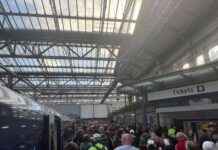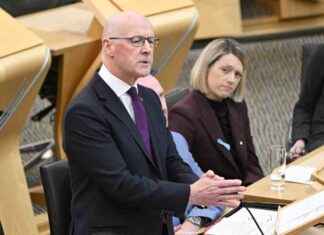The latest poll results indicate a tight race between the Scottish National Party (SNP) and Labour as they gear up for the 2026 Holyrood election. According to a survey conducted by pollster Survation on behalf of campaign group Scotland in Union, both parties are deadlocked in support among likely voters.
Neck-and-Neck Competition
The poll, which surveyed 1,021 Scots eligible to vote between August 27 and 29, revealed that both the SNP and Labour were tied at 28% support in the constituency vote. In the regional list vote, Anas Sarwar’s Labour party edged ahead with 25%, while John Swinney’s SNP followed closely behind at 24%.
This neck-and-neck competition sets the stage for a closely contested election, with both parties vying for the support of the Scottish electorate. The results highlight the importance of each party’s campaign strategies and policies in winning over undecided voters in the lead-up to the election.
Shifting Political Landscape
While the SNP and Labour battle for supremacy, the Scottish Tories face a challenge from the rising popularity of Reform UK. Led by Nigel Farage, Reform UK has gained significant support in recent months, posing a threat to traditional conservative voters in Scotland.
In the Survation poll, the Tories saw a decline in support, with just 11% of the constituency vote compared to 22% in the previous election. Meanwhile, Reform UK saw a surge in popularity, jumping to 9% in the constituency vote. At the regional level, the Tories maintained their support at 11%, while Reform UK gained 8% of the vote.
The emergence of Reform UK as a viable alternative to the Scottish Tories reflects a shifting political landscape in Scotland. Voters are increasingly looking for alternatives to mainstream parties, creating opportunities for new players like Reform UK to gain traction and influence the outcome of the election.
Support for Independence
In addition to party politics, the poll also gauged support for Scottish independence as the 10-year anniversary of the 2014 referendum approaches. The results showed that 59% of decided voters favored remaining in the UK, while 41% supported independence.
However, it’s important to note that the poll question differed from the one presented in the 2014 referendum. Instead of asking, “Should Scotland be an independent country?” as in the referendum, the poll framed the question in a Brexit-like manner, asking voters whether Scotland should remain part of the United Kingdom or leave.
This distinction in questioning highlights the nuances of public opinion on independence and the importance of framing the issue in a way that resonates with voters. As the debate over Scotland’s constitutional future continues, these poll results provide valuable insights into the dynamics of the independence movement and its implications for the upcoming election.
Political Priorities
Alastair Cameron, the founder and chair of Scotland in Union, emphasized the importance of focusing on key issues that matter to voters. He noted that the majority of voters still prefer to remain in the UK and criticized the SNP’s push for another referendum as a distraction from pressing government responsibilities.
Cameron highlighted the need for politicians to prioritize crucial matters such as improving the NHS, addressing the cost of living, creating jobs, and delivering affordable housing. By shifting the focus back to these core issues, politicians can better connect with voters and earn their trust and support in the upcoming election.
In conclusion, the latest poll results paint a picture of a closely contested election in Scotland, with the SNP and Labour deadlocked in support and new players like Reform UK shaking up the political landscape. As parties gear up for the 2026 Holyrood election, the focus will be on winning over undecided voters, addressing key issues that matter to the Scottish electorate, and shaping the future direction of Scotland’s political landscape.
































